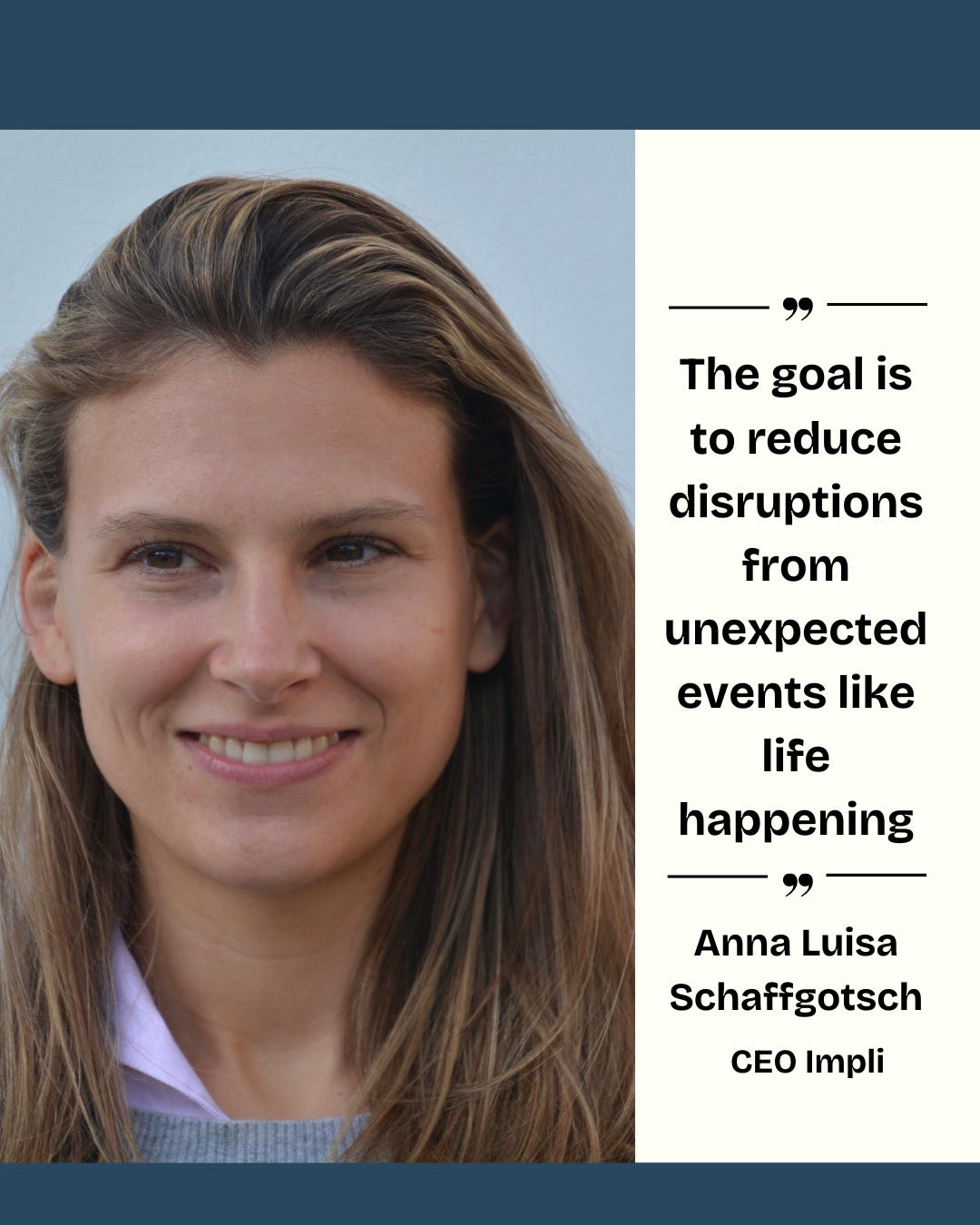Why Continuous Hormone Monitoring Could Be a Game-Changer in Women’s Health and Fertility Innovation
New tools are turning hormone data into real-time, actionable insights and opening the door to earlier, more precise interventions in reproductive health.
Welcome to the latest edition from FemmeHealth Ventures Alliance — delivering strategic insights into women’s health innovation and investment. We help you track emerging opportunities in Femtech and beyond, through a disciplined investor lens.
If this email was forwarded to you, you have awesome friends. Click below to join. Don’t forget, you can always explore our archives to catch up on any past stories.
The Hormone Gap: Why Fertility Care Needs a Rethink
There’s a quiet truth in fertility care that many don’t talk about: it’s not just the emotional toll of trying to conceive that weighs heavily. It’s the logistical one. And nowhere is this more apparent than in the way we track hormones.
Meet Emma.
Emma is 39, ambitious, and hopeful. She’s on her second round of IVF. Every morning, she’s expected at the clinic before 9 a.m. for her blood draw. The results inform time-sensitive medication decisions, often within hours.
One morning, Emma’s 3-year-old woke up with a fever. She was six hours late to her appointment.
That delay meant her estradiol levels couldn’t be interpreted with the precision required to proceed. The clinic cancelled the cycle.
Thousands of dollars. Weeks of injections and monitoring. Emotional strain that doesn’t fit neatly into numbers — gone. Reset.
This isn’t a rare story. It’s a routine disruption that women quietly absorb.
The Problem: Time-Bound Tools in a Real-Time World
In fertility care, timing is everything. Hormones like estradiol, LH, and progesterone fluctuate hourly. Yet the tools we rely on to measure them remain outdated — blood tests offering only point-in-time snapshots. Rigid, reactive, and blind to the nuance of a woman’s hormonal rhythm.
For patients, this creates a taxing routine:
Daily lab visits, inflexible schedules, early-morning logistics, and limited data that fails to capture the bigger hormonal picture.
In an era of real-time data and personalized care, fertility still feels like it’s operating with yesterday’s tools.
The Innovation: Continuous Hormone Monitoring
What if Emma didn’t have to race to the clinic?
That’s the question behind Impli, a Swiss healthtech startup led by CEO Anna Luisa Schaffgotsch. Impli is developing a subdermal biosensor designed to track hormone levels continuously giving women and clinicians access to real-time hormone data instead of single-moment blood draws.
“The goal is to reduce disruptions from unexpected events like life happening,” Anna explains. “We’ve developed an implantable biosensor that enables continuous, real-time hormone tracking, and our first go-to-market is IVF.”
The device is currently undergoing clinical validation, but early commercial interest has emerged. “We have a letter of intent signed with Ovation Fertility, one of the largest fertility clinic networks in the U.S.,” Anna shared. “And IVF is only the beginning.”
Impli’s broader vision spans the reproductive spectrum from fertility to contraception to menopause. “Future applications are many and, according to the company, may not require additional approvals based on the platform’s classification. We’re also working with Bayer on menopause use cases,” she noted.
The global women’s health market including fertility, menopause, and contraception is estimated to reach $2.8 trillion in addressable value.
Imagine Emma again, not in a waiting room, but in her living room, with a care team already watching her hormone patterns unfold. The treatment plan adjusts not in panic, but with precision.
The promise of continuous hormone monitoring isn’t just convenience. It’s care that adapts to real life.
The Market Signal: A Trillion-Dollar Opportunity
The global fertility services market is projected to exceed $47 billion by 2030, driven by delayed parenthood, growing demand, and rising IVF cycles.
Over 9 million IVF cycles are performed globally each year, with out-of-pocket costs ranging from USD $10,000 to USD $30,000 per round.
Hormone testing is a critical and costly component of this system, yet the technology hasn’t fundamentally evolved.
This isn’t just a healthcare issue. It’s a market inefficiency hiding in plain sight.
Beyond IVF: A Broader Vision for Women’s Health
The potential applications for continuous hormone monitoring go far beyond fertility. Menopause care, contraception, chronic hormonal conditions, and even personalized medicine all stand to benefit from better hormonal insights.
As more women seek proactive, personalized healthcare, access to meaningful, continuous data becomes more than a clinical need. It becomes an expectation.
What This Signals: Less Friction, More Agency
Impli’s work reflects a broader trend in women’s health: reimagining care models with less friction and more agency. It’s about equipping women not just with treatment options, but with usable, real-time information about their bodies.
Whether or not this particular device becomes the new standard, the direction of travel is clear: hormone diagnostics is an underexplored, high-impact frontier in health innovation.
The hormone gap may be quiet. But it’s not invisible. And it’s certainly not inevitable.
Want More?
I send private briefings focused on education, market trends, and early-stage innovation in health designed to help you better understand the private investing landscape.
👉 Sign up here to join the investor memo list
Ways to Connect with FemmeHealth Ventures Alliance
Thanks for reading. If you liked what you read, consider:
signing up for FemmeHealth newsletter, which is published weekly
sending to a friend or co-worker
Disclaimer
The content in this newsletter is for informational purposes only and does not constitute financial, investment, legal, or medical advice. Opinions expressed are those of the author and may not reflect the views of affiliated organisations. Readers should seek professional advice tailored to their individual circumstances before making decisions. Investing involves risk, including potential loss of principal. Past performance does not guarantee future results.







It will be interesting to see where this goes. The applications to individual women will be huge, but the collective understanding of how our hormones work could fill the current gaps if they are able to develop this technology (not really "if", but when).
I absolutely appreciate the concept of continuous hormone monitoring but I worry that it may be a false promise right now. Steroid hormones are extremely tricky to measure and require different methods of isolation and measurement techniques than other molecules (like glucose or protein hormones like LH/FSH). Is there any information on how this company is specifically measuring estradiol (the trickiest of them all)? I couldn't find anything on their website. I am honestly curious about this!